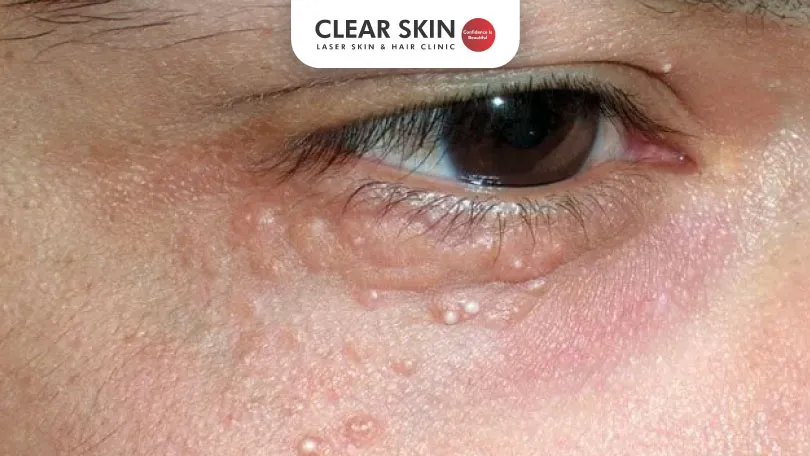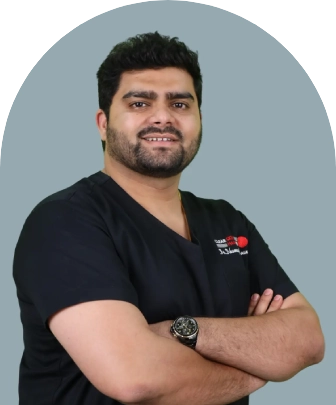How to Identify Milia: Symptoms and Treatment
Reviewed By: Dr. Manali Shah
Updated on: 12th November, 2022

“Small white bumps on your skin? Find out if it’s milia and how to treat it effectively.”
You must have encountered those tiny little white bumps which are so stubborn in nature that they remain persistently attached to your skin despite all your efforts at maintaining high degrees of cleanliness. They occur when the dead skin cells instead of exfoliation gets trapped beneath the skin, appearing as white dots. They transform into tiny cysts and usually resolve on their own. However, at times they do require intervention. It is usually seen on cheeks, nose, eyes, neck, forehead and chest areas. They are more common in babies. It is usually presented as a tiny cyst containing protein keratin.
Table Of Content
-
Discriminating milia and whiteheads
-
Milia inflicts both adults and babies
-
Types of milia
-
Formation procedure
- Eliminating milia
-
Inside the boundaries of home
-
When to see the doctor
- Conclusion
Discriminating Milia and Whiteheads
- A white head is lodged much deeper into the skin, looks like bumps and is also known as congested skin. Chin, hairline, cheeks or sides of the mouth are its favorite harbors.
- Milia, on the other hand, looks like white blackheads. They are more firm in nature and are immune to prodding with nails or fingers. Marking its presence beneath eyes and cheeks, they are usually a result of overconsumption of dairy or due to the curse of genetics.
Milia inflicts both Adults and Babies
- Though milia are more common in neonates, it is entitled to affect all age groups. Mostly found on nose, eyes, and genitalia, they are often confused with STDs.
- In adults, the dead cells cannot be properly disposed of off as the skin becomes leathery.
Types of Milia
- Neonatal – seen in newborns around eyes, cheeks, mouth and inside the mouth. they originate from sweat glands.
- Primary – occurs in both children and adults.
- Secondary– they proliferate in areas of the body which have been damaged before.
- Milia en plaque- the form on the inflamed, reddened and elevated area behind ears, eyelids or jaw.
- Multiple eruptive milia– appears in crops on the upper arm, face or upper trunk.
Formation Procedure
- They develop when dead skin gets trapped in pockets of skin and tissues.
- They can have a genetic or autoimmune predisposition.
- In adults, they usually occur in already affected areas of the body due to burns, blisters, skin resurfacing procedures, long-term steroid use, and long-term sun damage.
Eliminating Milia
They are usually harmless and temporary and resolve on their own. However, some find it cosmetically unacceptable and so vouch for a treatment. Pricking with a needle, squeezing out the content could be the worst possible alternative and with only cause your skin damage.
The best methods for removal are-
- Ellman radiofrequency
- Laser treatment
How Fractional Co2 Laser work for Milia removal?For treating milia at home, follow the following steps-
- Sanitize the needle
- Clean your face thoroughly
- Dry your face
- Make an incision on side or top of milia
- Using needle apply gentle pressure to remove the milia out of its lodging.
- Apply antiseptic or rub alcohol on the incision
- Continue regular skincare routine.
Inside the Boundaries of Home
- Regular cleansing is indispensable. Use warm water, use a gentle face wash and dry your skin gently.
- Try exfoliators to get rid of dead cells.
- Apply retinol every night.
- Protect your skin from sunlight. Use sunblock and shades.
- Curb the use of heavy makeup and cosmetics.
- Do not scratch them away as it can damage your skin.
When to see the Doctor
Visit your doctor if you see bumps covering large areas of your skin, bumps are spreading, they get itchy, bleeding or painful. It is best to get it removed by a doctor, if you have an unsteady hand, they are present below the eyes or are concentrated in an area.Important Resource on Milia
Do You Know?
Roughly 250 Patients Are Treated
Everyday By These Dermatologists
(You are one click away from flawless skin)
Meet our Dermatologist!
Conclusion
Identifying milia is crucial for effective treatment. These small white bumps, often found on the face, can be caused by trapped keratin under the skin. While milia are harmless, they can be persistent and require specific treatments. Home remedies like gentle exfoliation and over-the-counter products can help, but for stubborn cases, professional treatments such as microdermabrasion or chemical peels may be necessary. For personalized advice and advanced treatment options, consult the dermatologists at Clear Skin Clinic. Achieving smooth, clear skin is possible with the right approach to managing milia.
Further Reading
Do Acne Scar Removal Creams Really Work?
Discover do acne scar removal creams really work. Learn about the best ingredients and treatments to fade acne scars at Clear Skin Pune
Acne Pustules: How to Get Rid of Pustules?
Learn about causes, symptoms, and treatments from Dr. Dhanraj Chavan.
Is Tretinoin Cream Safe for Melasma? Tips and Usage Guide
Discover how tretinoin cream can safely treat melasma.
Unveiling the Potential of Face Packs for Acne Scars
Discover how homemade and customized face packs can help lighten acne marks and rejuvenate your skin.
Have thoughts? Please let us know
We are committed not only to treating you, but also educating you.






